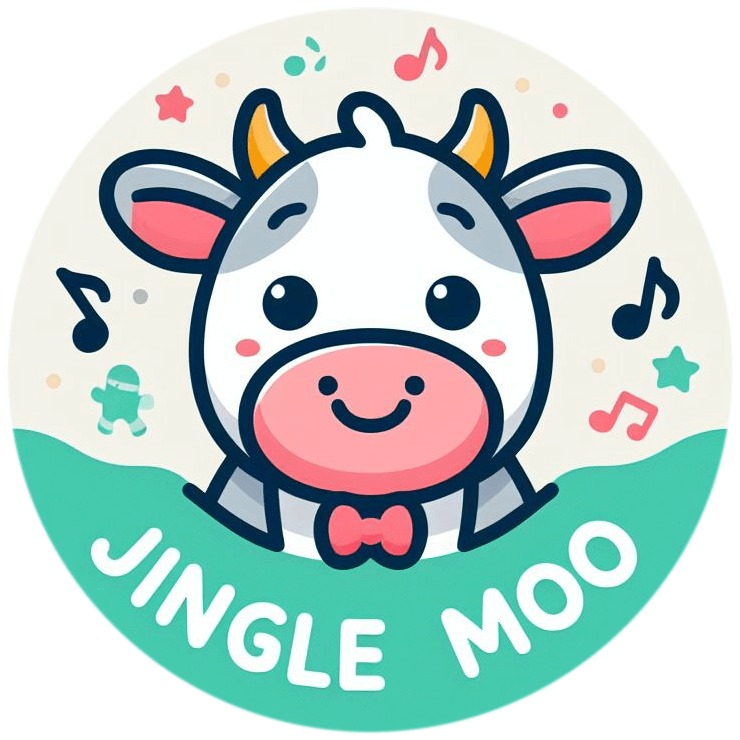🎶 Hop little Bunnies, hop hop hop! 🎶
Join in and sing along as we hop, skip and jump with the sleepy Bunnies!

Hop Little Bunnies Lyrics
See the bunnies sleeping ’til it’s nearly noon
Shall we wake them with a merry tune?
They’re so still, Are they ill?
Wake up soon
Wake up, little bunnies!
Hop, little bunnies Hop, hop, hop
Hop, little bunnies Hop, hop, hop
Hop, little bunnies Hop, hop, hop
Hop, hop, hop, hop, hop
See the bunnies sleeping ’til it’s nearly noon
Shall we wake them with a merry tune?
They’re so still, Are they ill?
Wake up soon
Wake up, little bunnies!
Skip, little bunnies Skip, skip, skip
Skip, little bunnies Skip, skip, skip
Skip, little bunnies Skip, skip, skip
Skip, skip, skip, skip, skip
See the bunnies sleeping ’til it’s nearly noon
Shall we wake them with a merry tune?
They’re so still Are they ill?
Wake up soon
Wake up, little bunnies!
Jump, little bunnies Jump, jump, jump
Jump, little bunnies Jump, jump, jump
Jump, little bunnies Jump, jump, jump
Jump, jump, jump, jump, jump
Hop, little bunnies Hop, hop, hop
Hop, little bunnies Hop, hop, hop
Hop, little bunnies Hop, hop, hop
Hop, hop Hop, hop, hop
This playful song, often accompanied by actions, is excellent for engaging children while promoting various developmental skills.
For Babies (0-12 months)
Focus: Sensory development, bonding, and early language exposure
How to Use:
Sing softly while holding or rocking the baby. Use a calm, soothing tone to make it a comforting experience.
Add gentle movements: Lift their arms or legs in a “hopping” motion during the chorus (“Hop, hop, hop!”).
Focus on repetition: Babies love hearing familiar sounds, so repeat the song daily to build recognition of rhythm and words like “bunny” or “hop.”
Use props: Show a soft bunny toy or a picture to connect the song to a visual object.
Learning Outcome: Stimulates early auditory and motor skills, encourages bonding through touch and voice.
For Toddlers (1-3 years)
Focus: Motor skills, language development, and following instructions
How to Use:
Introduce actions: Teach them to hop like bunnies during the “Hop, hop, hop” part. Start with simple jumps or bounces.
Play the wake-up game: Many versions of the song include bunnies “sleeping” until it’s time to hop. Have toddlers lie down or crouch, then jump up when you sing “See the little bunnies wake up!”
Build vocabulary: Emphasize words like “hop,” “bunny,” “sleep,” and “wake.” Pause to ask, “What do bunnies do?” and let them respond with words or actions.
Keep it short: Stick to one or two verses to match their attention span.
Learning Outcome: Enhances coordination, introduces basic verbs, and encourages listening skills.
For Preschoolers (3-5 years)
Focus: Coordination, creativity, and social skills
How to Use:
Expand the actions: Encourage hopping in different ways—high hops, tiny hops, or hopping in a circle. Ask, “How else can bunnies move?” to spark imagination (e.g., wiggle ears, twitch noses).
Add storytelling: Before or after singing, ask questions like, “Where do the bunnies live?” or “What do they eat?” Let them invent a little bunny adventure.
Group play: Sing with multiple children and have them hold hands or take turns being the “lead bunny” who hops first.
Count the hops: Incorporate numbers by counting hops aloud (e.g., “Let’s hop 5 times!”).
Learning Outcome: Boosts physical activity, introduces counting, and fosters creativity and cooperation.
For Early School (5-7 years)
Focus: Rhythm, literacy, and problem-solving
How to Use:
Clap the rhythm: Teach them to clap or tap along to the beat, helping them recognize patterns in music.
Write or draw: After singing, ask them to draw the bunnies or write simple words from the song (e.g., “hop,” “bunny”). For non-writers, trace the words together.
Adapt the lyrics: Encourage them to change the song—e.g., “Swim, little fishies” or “Fly, little birds”—and act out the new version.
Problem-solving game: Ask, “What would wake the bunnies up?” (e.g., a loud noise, the sun). Discuss their ideas.
Learning Outcome: Develops musical awareness, early literacy, and critical thinking.
